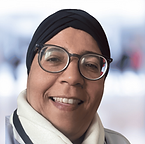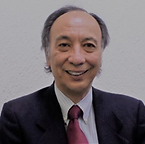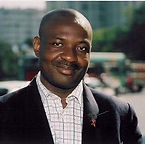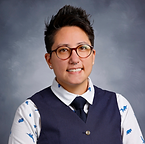
About WAS
WAS is a Confederation representing thousands of people who work in Sexual Health globally, including Healthcare Professionals, Educators and Activists.
WAS is actively creating a world in which all people have access to Sexual Health, Rights, Justice and Pleasure.
WAS achieves this through its regional federations, global memberships and strategic collaborations with international partners.
WAS Executive Officers

President:
Faysal El Kak
LEBANON
Associate Professor of OBGYN Sexual Health and Director of Women Integrated Sexual Health Program - Department of OBGYN - American University of Beirut

Vice-President:
Esther Corona-Vargas
MEXICO
Founder of the Mexican Association for Sexuality Education

Immediate Past President:
Elna Rudolph
SOUTH AFRICA
Medical Doctor, Sexologist and Clinical Head of My Sexual Health

Secretary-General:
Erick Janssen
BELGIUM
Professor in Sexology and Director of the Institute for Family and Sexuality Studies at the University of Leuven.
WAS Executive Committee

Associate Secretary
Armin Ariana
AUSTRALIA
Associate Professor in Medical Education at Griffith University. Medical Doctor and Clinical Sexologist.

Associate Secretary
Stefano Eleuteri
ITALY
Health Psychologist, PhD, and Clinical Sexologist at the Institute of Clinical Sexology, Rome. Researcher in Clinical Psychology, Mercatorum University, Rome.

Co-Chair: Scientific Committee
Terry Humphreys
CANADA
Professor and Graduate Director, Psychology Department, Trent University, Peterborough, Ontario.

Associate Secretary
Eszter Kismödi
SWITZERLAND

Co-Chair: Scientific Committee
Kristen Mark
USA
Professor and Director of Education at the Eli Coleman Institute for Sexual and Gender Health, University of Minnesota Medical School.

Associate Secretary
Ana Yáñez-Otero
SPAIN
Health Psychologist and Clinical Sexologist. Specialist in Couples Therapy and Sexual Education. President of the Spanish Federation of Sexology Societies . Director of the Clinical Institute of Sexology of Extremadura . Director and Lecturer in the Master’s Degree in Sexology at the University of Extremadura .
WAS Federation Presidents

.png)
.png)



Asia-Oceania Federation for Sexology (AOFS):
Dr. Christopher Fox
AUSTRALIA
European Federation of Sexology (EFS):
Esben Esther Pirelli-Benestad
NORWAY
Latin American Federation of Sexology and Sex Education Societies (FLASSES):
Felipe Hurtado Murillo
SPAIN
North American Federation for Sexology Organizations (NAFSO):
Justin Sitron
USA
East Mediterranean Federation of Sexual Health (EMFeSH):
Dr. Bouchra Assarag MOROCCO
Sexual Health Africa
(SHA):
Uwem Esiet
NIGERIA
WAS Advisory Committee

.jpg)



Bradley R. Daniels
SOUTH AFRICA
Ons Kaabia
TUNISIA
Jeyarani Kamaraj
INDIA
Sharful Islam Khan
BANGLADESH
Leiszle Lapping-Carr
USA





Osmar Matsui
MEXICO
Rosediani Muhamad
MALAYSIA
Jean-Paul Ngueya
CAMEROON
Nic Rider
USA
Tammary Rotich
KENYA
WAS Mission Statement
WAS promotes and advocates for sexual health and sexual rights throughout the lifespan and worldwide by advancing sexology, science-based sexuality knowledge, research, comprehensive sexuality education, clinical care and services.
The mission of WAS is carried out through:
-
Promoting sexual rights for all.
-
Developing the field of sexuality, sexual health, and sexology.
-
Facilitating the dissemination and exchange of information, ideas, and experiences.
-
Promoting scientific and ethical standards for educating professionals and others working in the area.
-
Establishing and maintaining working relations with official regional federations, member organizations, international agencies, organizations, and societies.
The purpose of WAS is to advance international cooperation in the field of Sexual Health and to coordinate activities designed to increase research and knowledge in sexual health and sexual rights, including sexuality education, sexual medicine, psycho-sexology, policy-making and advocacy.
How does WAS work?
WAS has regional representation in the form of its Official Federations.
The work of WAS is done through committees chaired by WAS Advisory Committee members and functions under specific terms of reference.
The highest governing body of WAS is the General Assembly which consists of representatives of all the WAS Membership Organizations.
The Advisory Committee of WAS is elected by the General Assembly and has the function to approve or deny any recommendation for membership made by the Executive Committee.
The day-to-day running of the organization is the responsibility of the officers (President, Vice-President, Secretary General and Immediate Past-President).
The President and Vice-President of WAS are elected by the Advisory Committee and the Secretary General is appointed by the President.
WAS is aligned with the 2030 Agenda of the UN and the Sustainable Development Goals (SDGs), with WAS working actively toward the realization of almost all of the SDGs.
WAS Theory of Change
WAS is actively creating a world in which:
-
People make informed, autonomous, ethical and respectful Sexual Health choices.
-
Laws and policies are applied to ensure Sexual Health, Rights and Justice for ALL.
-
Sex positive attitudes and beliefs are embraced around the world and diversity is widely accepted.
-
Scientific, evidence- and rights-based, experience-informed, context-sensitive knowledge about sexuality is widely accessible and not censored.
-
Gender equality is achieved within the most comprehensive understanding of gender, including that of Trans and Gender Diverse Individuals.
-
Sexual violence and harm are eliminated under all circumstances.
-
Comprehensive sexuality education is standard practice in and out of school.
-
Professional standards are well-developed and regulated on ethical and best-practice guidelines to ensure the highest quality of clinical and other sexual health services around the globe.

















The WAS Theory of Change outlines the eight key outcomes WAS aims to achieve for long-term societal improvement.
Here it is overlaid with our values and interdisciplinary approach.
.png)







.png)



